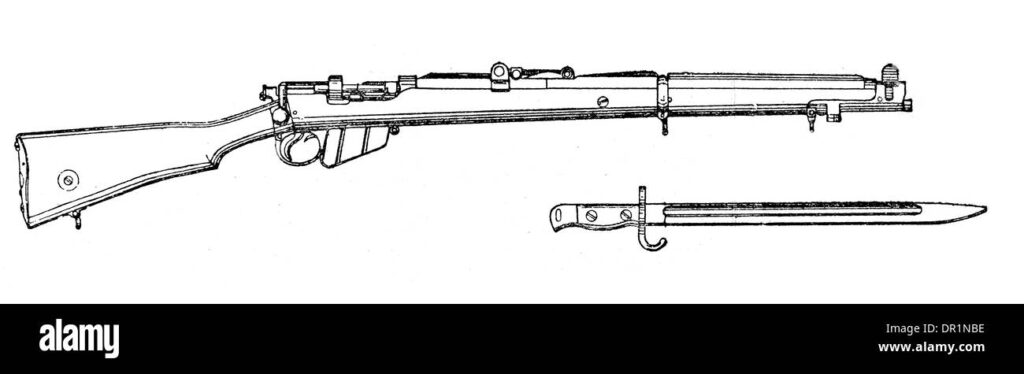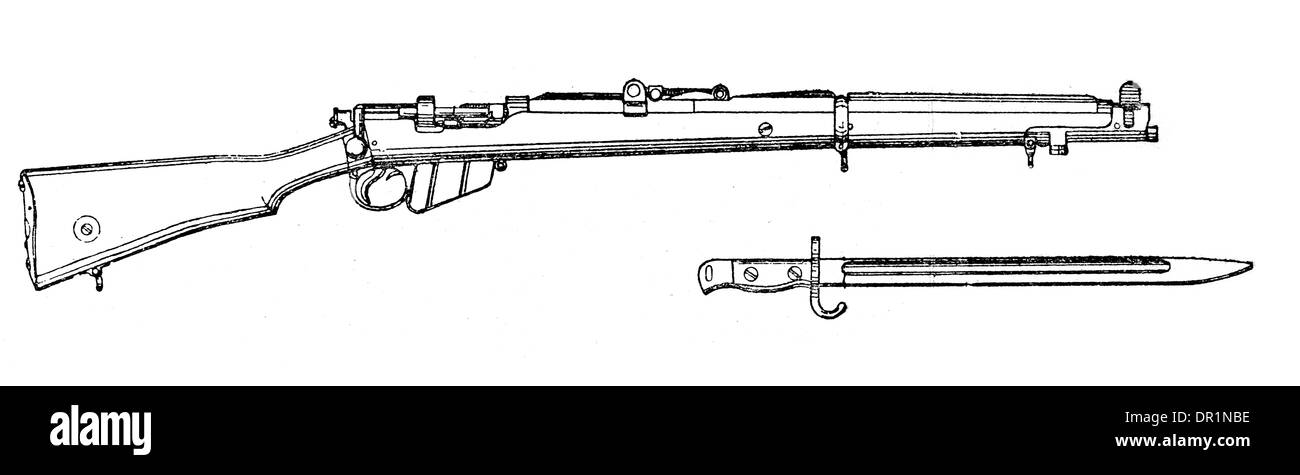
The Enduring Legacy of the .303 British Rifle: A Comprehensive Overview
The .303 British rifle holds a significant place in military history, serving as a mainstay of the British armed forces and the Commonwealth for over half a century. This bolt-action rifle, chambered in the .303 British cartridge, saw action in countless conflicts, from the late 19th century through World War I, World War II, and beyond. Its reliability, accuracy, and widespread availability cemented its status as a truly iconic firearm. The .303 British cartridge itself became a standard, influencing ammunition design for decades. This article will explore the history, design, variants, and lasting impact of this remarkable rifle. Understanding the .303 British rifle requires examining its origins, its role in shaping military tactics, and its continued presence in the civilian market. Its story is intertwined with the rise and fall of empires, technological advancements in firearms design, and the personal experiences of countless soldiers.
A History Forged in Empire
The story of the .303 British rifle begins in the late 1880s as the British military sought to modernize its arsenal. The initial design was adopted in 1888 as the Magazine Lee-Metford (MLM), chambered for a black powder cartridge. However, the rapid advancements in smokeless powder technology quickly rendered the black powder cartridge obsolete. In 1895, the rifle was redesigned to accommodate the more powerful smokeless powder cartridge, becoming the Magazine Lee-Enfield (MLE). This new rifle, chambered for the .303 British round, marked a significant leap forward in firepower and range. The .303 British cartridge, with its rimmed design and powerful propellant, provided the rifle with excellent ballistics and stopping power.
The Lee-Enfield’s initial adoption coincided with the expansion of the British Empire. It saw extensive use in colonial conflicts, including the Second Boer War (1899-1902), where its superior accuracy and rapid firing rate proved decisive against Boer marksmen. The rifle’s ten-round magazine capacity allowed British soldiers to maintain a high volume of fire, giving them a tactical advantage in many engagements. The .303 British rifle quickly became a symbol of British military power and a trusted companion for soldiers serving in far-flung corners of the empire.
World War I: A Trial by Fire
World War I brought unprecedented challenges to the British military, and the .303 British rifle was at the forefront of the conflict. The standard issue rifle was the Short Magazine Lee-Enfield (SMLE) Mk III, introduced in 1907. This improved version of the Lee-Enfield was shorter and lighter than its predecessors, making it easier to handle in the trenches. The SMLE Mk III quickly gained a reputation for its reliability and accuracy, even under the harsh conditions of trench warfare. The .303 British round proved effective against enemy soldiers, providing sufficient stopping power to neutralize threats quickly. [See also: Lee-Enfield Rifle Development]
The SMLE’s rapid firing rate was a key advantage in the war. British soldiers were trained to fire fifteen aimed rounds per minute, a skill known as the “Mad Minute.” This rapid rate of fire, combined with the rifle’s accuracy, allowed British troops to deliver devastating volleys of fire against attacking enemy soldiers. The sound of massed rifle fire became a defining characteristic of the Western Front. The .303 British rifle played a crucial role in the defense of British positions and contributed significantly to the eventual Allied victory. The demand for .303 British rifles during World War I was enormous, leading to mass production efforts in Britain, Canada, and other Commonwealth countries.
Interwar Period and World War II
The interwar period saw further refinements to the .303 British rifle. While the SMLE Mk III remained the standard issue rifle, the British military explored new designs and modifications. The need for a sniper rifle led to the development of specialized versions of the SMLE, equipped with telescopic sights and other enhancements. These sniper rifles played a critical role in reconnaissance and counter-sniper operations.
World War II once again placed the .303 British rifle at the center of the conflict. The SMLE Mk III continued to serve as the primary infantry rifle, but the British military also introduced the No. 4 Rifle. The No. 4 Rifle was designed for mass production, with simplified features and a more robust construction. It became the standard issue rifle for British and Commonwealth forces during the latter half of the war. The .303 British cartridge remained the standard ammunition, providing reliable performance in a variety of combat environments. The .303 British rifle saw action in North Africa, Europe, and the Pacific, proving its versatility and effectiveness in diverse terrains. [See also: Military Small Arms of World War II]
Variants and Adaptations
Over its long service life, the .303 British rifle spawned numerous variants and adaptations. These included:
- The Lee-Metford (MLM): The original version, chambered for a black powder cartridge.
- The Magazine Lee-Enfield (MLE): An improved version chambered for the .303 British smokeless powder cartridge.
- The Short Magazine Lee-Enfield (SMLE) Mk III: The most widely used version, featuring a shorter barrel and improved sights.
- The No. 4 Rifle: A simplified and more robust version designed for mass production during World War II.
- Sniper Rifles: Specialized versions of the SMLE and No. 4 Rifle, equipped with telescopic sights and other enhancements.
- Jungle Carbine (No. 5 Rifle): A shortened and lightened version designed for use in jungle warfare.
These variants reflected the changing needs of the British military and the diverse environments in which the .303 British rifle was used. The Jungle Carbine, in particular, was designed to address the unique challenges of combat in the dense jungles of Southeast Asia. Its shorter barrel and lighter weight made it easier to maneuver in confined spaces.
The .303 British Cartridge: A Lasting Legacy
The .303 British cartridge itself played a crucial role in the success of the .303 British rifle. The cartridge was originally designed with a round-nosed bullet, but it was later modified to incorporate a pointed bullet for improved ballistics. The .303 British cartridge is a rimmed, bottlenecked cartridge, known for its reliability and accuracy. It has been manufactured in various forms, including armor-piercing, incendiary, and tracer rounds. The .303 British round’s versatility and effectiveness made it a popular choice for both military and civilian applications. [See also: History of Ammunition Development]
Even after the .303 British rifle was phased out of military service, the .303 British cartridge remained popular among civilian shooters and hunters. Its availability and relatively low cost made it an attractive option for those seeking a reliable and accurate cartridge for target shooting and hunting. Many surplus .303 British rifles were sold on the civilian market, further contributing to the cartridge’s popularity. The .303 British round continues to be manufactured today, ensuring its availability for future generations of shooters.
The .303 British Rifle in the Modern Era
While the .303 British rifle is no longer in active military service, it continues to hold a special place in the hearts of many firearm enthusiasts and collectors. Its historical significance, reliability, and accuracy have made it a popular choice for historical reenactments, target shooting, and hunting. Many .303 British rifles have been preserved as historical artifacts, serving as a reminder of their role in shaping the course of history. The .303 British rifle remains a testament to the ingenuity and craftsmanship of British firearms designers.
The enduring legacy of the .303 British rifle is a testament to its quality and effectiveness. It served with distinction in countless conflicts, earning the respect of soldiers and civilians alike. Its impact on military history and firearms design is undeniable. The .303 British rifle will continue to be remembered as one of the most iconic and influential firearms of the 20th century. The .303 British rifle’s story is one of innovation, adaptation, and enduring performance, solidifying its place as a true legend in the world of firearms. Its widespread use across the British Empire and Commonwealth has left an indelible mark on military history. The .303 British rifle continues to be a subject of fascination for historians, collectors, and shooting enthusiasts alike. The .303 British rifle is more than just a firearm; it is a symbol of a bygone era and a reminder of the sacrifices made by countless soldiers who carried it into battle.
Conclusion
The .303 British rifle, a product of late 19th-century innovation, stands as a remarkable example of military engineering and enduring design. From its initial adoption to its widespread use in two World Wars and numerous colonial conflicts, the .303 British rifle proved to be a reliable, accurate, and versatile firearm. Its legacy extends beyond its military service, as it continues to be appreciated by collectors, shooting enthusiasts, and historians. The .303 British cartridge, in particular, remains a testament to the cartridge design principles of its time, influencing future ammunition development. The .303 British rifle is not just a weapon of war; it is a piece of history, a symbol of British ingenuity, and a reminder of the countless individuals who relied on it in times of conflict.

